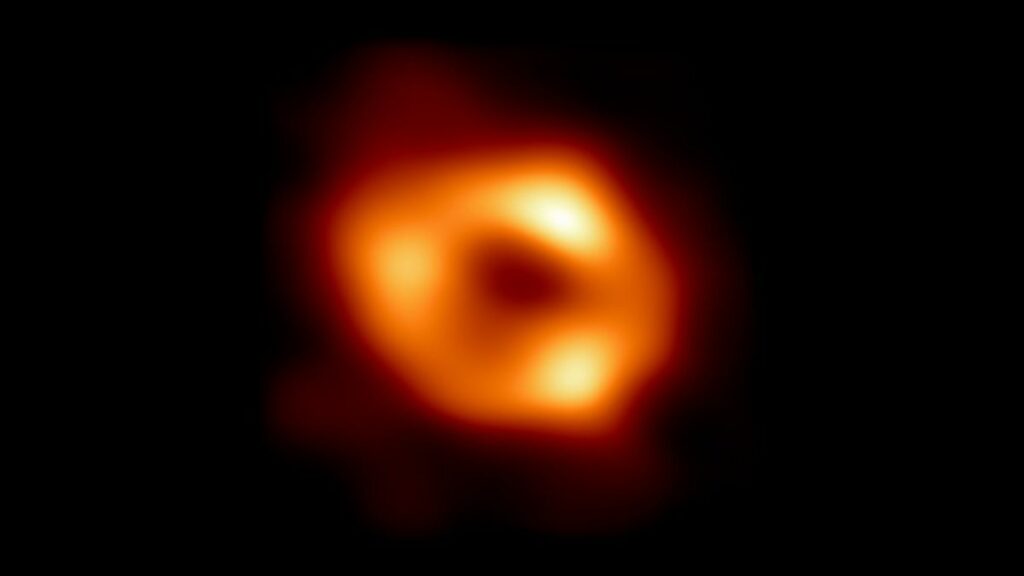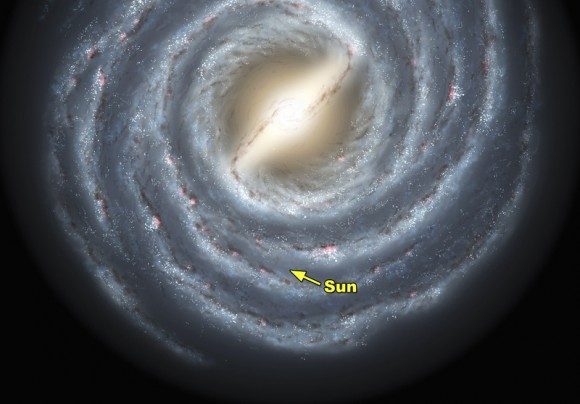To be exact, how many rotations has the sun completed around the Milky Way?
Some people may find it difficult to understand how the Earth moves through space. But it gets even more complex when one starts to ponder over the fact that everyone is traveling simultaneously in two circles – around the sun and the Milky Way.

Just as the moon revolves around the Earth and Earth around the sun, our star is also in constant motion around the Milky Way, more precisely, around the supermassive black hole that resides at the center of the galaxy. The whole of the Milky Way is in an almost continuous rotation around the central black hole of the galaxy.
The question arises: how many times has our solar system orbited the giant black hole in the center of the galaxy?Choosing the answer is not quite easy as it might seem.
It is much longer and less predictable than the revolutions of planets around the sun, thus it is difficult to determine the number of times our sun has revolved around the Milky Way’s center.
Using simple mathematical equations, it became possible to calculate the current time it takes for the solar system to traverse the circle around our galaxy and help identify how many times our area of the universe has passed through the Milky Way. But it is still not easy to give an exact answer to this question.

According to Space. our solar system – including the sun and all the planets – is currently moving through the galaxy at approximately 448,000 miles per hour or 720,000 kilometers per hour. Although it might sound quite surprising, there are stars in the Milky Way galaxy that are called hypervelocity stars and they can reach speeds of up to 5. This is the speed at which the Earth rotates on its axis, also known as the muzzle velocity of the earth, 1 million miles per hour (8. 2 million kilometers per hour).
Our home star at its current pace of rotation takes approximately 230 million years to make one full rotation around the Milky way galaxy. It is 750,000 times the existence of man and earth’s time span during the rule of the dinosaurs.
The sun, it is believed to be around 4. as estimated by The Planetary Society to be 6 billion years old and, therefore, formed approximately 100 million years before Earth. If the sun had had a uniform motion throughout this whole period its movement would have been about 20 revolutions round the galaxy and during this time the Earth moved with the sun for nearly 98% of the time.
But yes, the sun has gone through many orbits in its lifetime or at least the orbit distance much has changed over its lifetime. Speaking with Michael van Walt, astrophysicist Victor Debattista from the University of Central Lancashire in the United Kingdom, who specializes in galactic evolution, revealed that the sun was probably not born in the place where it is located at present. According to Live Science, it was likely born much closer to the center of the Milky Way as the authors explained.
Presently, we are roughly located about 26,100 light-years away from the center of the Milky Way. However, the metal content of the sun, that indicates the age and distance of a star, gives the idea that our sun formed 16,300 light years from the galactic center. Known as ‘radial migration’, Debattista explained that such movement was as a result of the force from the spinning spiral arms of galaxies, such as the Milky Way, pushing stars along their natural orbits like a surfer rocking along a wave.
According to Debattista, it takes sun only around 125m years to go once around the sky when it was born. As the sun move outwards the orbital period increases to the present time over the many billions of years. This makes it difficult to determine how far the sun has moved through the Milky Way than earlier estimates suggest constant movement. The other stars also experience radial migration and about half of the stars within the solar neighborhood are believed to have moved inward before being pushed outward. Debattista also stated that this percentage is proportional to the distance of the stars from the hub of Milky Way. It is also very unlikely now that the sun has moved into a fairly stable orbit around the galaxy that it may still be moving. According to Debattista, the sun can certainly extend its motion outward, but this process is characterised by considerable uncertainty.
Do not forget to share your opinion with us to provide you with the best posts !




0 Comments